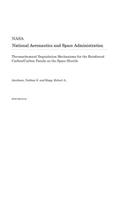
Thermochemical Degradation Mechanisms for the Reinforced Carbon/Carbon Panels on the Space Shuttle
Series:
The wing leading edge and nose cone of the Space Shuttle are fabricated from a reinforced carbon/carbon material (RCC). The material attains its oxidation resistance from a diffusion coating of SiC and a glass sealant. During re-entry, the RCC material is subjected to an oxidizing high temperature environment, which leads to degradation via several mechanisms. These mechanisms include oxidation to
NaN
VOLUME
English
Paperback

The wing leading edge and nose cone of the Space Shuttle are fabricated from a reinforced carbon/carbon material (RCC). The material attains its oxidation resistance from a diffusion coating of SiC and a glass sealant. During re-entry, the RCC material is subjected to an oxidizing high temperature environment, which leads to degradation via several mechanisms. These mechanisms include oxidation to form a silica scale, reaction of the SiO2 with the SiC to evolve gaseous products, viscous flow of the glass, and vaporization of the glass. Each of these is discussed in detail. Following extended service and many missions, the leading-edge wing surfaces have exhibited small pinholes. A chloridation/oxidation mechanism is proposed to arise from the NaCl deposited on the wings from the sea-salt laden air in Florida. This involves a local chloridation reaction of the SiC and subsequent re-oxidation at the external surface. Thermodynamic calculations indicate the feasibility of these reactions at active pits. Kinetic calculations predict pore depths close to those observed. Jacobson, Nathan S. and Rapp, Robert A. Glenn Research Center RTOP 505-63-52...
Price Comparison [India]
In This Series
Bestseller Manga
Trending NEWS




















